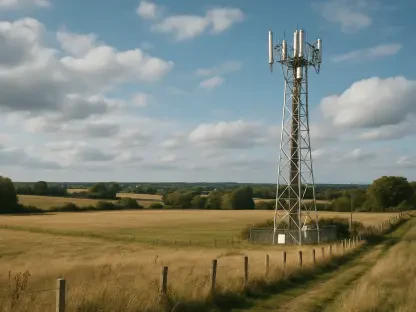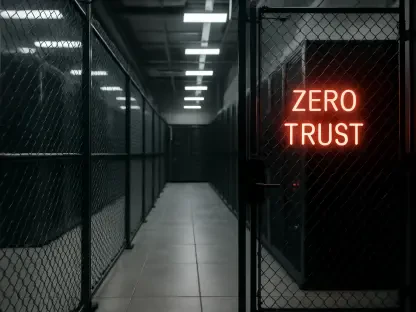There’s a new hypothesis in the networking industry: To add value in the new business context, network professionals must become Full-Stack Network Engineers (FSTNEs).
Businesses operate in increasingly complex environments, and connectivity is paramount to operational success. Network engineers must have a working knowledge of several fields, including multi-cloud computing, edge applications, remote workforce management, and even Artificial Intelligence, to keep up with evolving demands.
For enterprise network engineers, keeping the connection alive is contingent on being well-versed in the various technologies employed. Experts are asking, “Should network engineers develop full-stack skills?” Full-stack network engineering (FSNE) is a growing profession in high demand.
Let’s take a look at what this entails:
What is a Full-Stack Network Engineer?
Full-stack network engineers signify a new era in technology and networking. Interconnectivity, underpinned by an understanding of various technologies, can facilitate the seamless onboarding of new tech stacks across multiple scenarios and environments. Full-stack network engineers train in all aspects of IT, including:
Routing
Switching
Wireless
Security
Data center management
Cloud
Automation
Virtualization and
Voice over Internet Protocol (VoIP)
Companies typically outsource their IT operations or hire specialists to fill the gaps for network engineers. Hiring full-stack network engineers increases costs and forces reliance on third-party service providers; additionally, these hired professionals need more critical institutional knowledge of business operations.
With these specialized employees, businesses are guaranteed a turnkey networking solution.
FSNEs provide immense value to businesses. They have an intrinsic understanding of how the company operates and are able to incorporate this into their networking needs. The combination of institutional knowledge alongside technical capabilities allows FSNEs to proactively solve problems and keep maintenance operations in-house (as much as possible).
What a full-stack network infrastructure means
The full-stack network infrastructure doesn’t refer to the typical seven-stack protocol, which comprises the physical, data link, network, transport, session, presentation, and application layer. Instead, the full-stack network environment refers to the layers, applications, and IT assets that networks are built upon.
Network management tools from different vendors have always comprised an overarching “full stack” of tools. This creates visibility and enables network professionals to work under one management umbrella. A full-stack network management infrastructure like this can:
Monitor and manage everything across a multi-cloud network through a “single pane of glass.”
Use a single, consolidated set of tools to address all network issues.
Define and enforce a uniform set of governance and security policies that apply to everything (an auditor’s dream!)
Network management software vendors share this vision and have begun offering full-stack network solutions, too.
That’s why companies like Cisco, Fortinet, Arista, Aruba, IBM, and others have begun to offer full-stack network management solutions that address network operations across multiple clouds. This includes configuration, security, deployment, monitoring, and mediation. On the multi-cloud security integration side, there are SASE (Secure Access Service Edge) solutions that Cisco, Fortinet, Zscaler, Palo Alto Networks, and others provide.
A good follow-up question would be, “How do I know if my organization needs a full-stack network management solution or just a SASE solution?” The answer lies in understanding your immediate concerns; SASE is excellent at uniforming network governance and security policies. On the other hand, a full-stack network solution addresses the entire network management continuum—from security and governance to monitoring, configuration, deployment, and mediation.
How the network market is moving toward FSNEs
The enterprise network market is estimated to grow at a compound annual growth rate (CAGR) of 5.8% between now and 2030. So, while growth is steady, it is not at the rate of other IT investments like AI.
Experts interpret this as companies pursuing a more graduated approach to improving their networks in the short term, with their primary focus being improving security. The next question for network professionals is, “Do you look or leap into a full-stack network management approach?”
The answer will likely depend on improving reliability, resiliency, network monitoring, health, security, and mean time to response and resolution (MTTR) for issues in a multi-cloud environment requiring 360-degree awareness.
The biggest challenge will be the immediate capital input regarding hardware and software acquisition, and staff upskilling. However, businesses cannot simply kick the can down the road and defer investment. This adds to the complexity of decision-making as companies grapple with how to grow the network while vendors that offer full-stack, multi-cloud solutions are still in their infancy.
What’s a sound approach to full-stack network management with vendors and companies in developmental stages? A good starting point from both technology and budgetary standpoints is in the area where multi-cloud network operability is mature: the automation of security and governance rules and execution across clouds.
SASE and full-stack network management software providers can apply a uniform set of security and governance standards to a wide array of clouds. This reduces security and compliance risks for companies, and reducing risk makes it a more manageable budget “sell” for network managers when they make the business case to executives for a move to a full-stack network management solution.
Planning your roadmap
At the same time, network managers should consider end-to-end visibility and interoperability because network technology is undoubtedly moving this way. The vision is 360-degree visibility (and the ability to configure, deploy, and fix) across an entire multi-cloud network, no matter where its endpoints are. However, even if a total solution were available today, enterprises still need to prepare for the technology. Preparatory steps include:
Cost: What will it take to fund full-stack network management software, migrate to it—and sell the value of the approach to management?
Operational revisions and staff expertise: If you move to a single, monolithic network management software that can manage your multi-cloud network from a single pane of glass, your existing network tools will likely be replaced by a new set that your staff will need to learn to use. Network operational workflows must also be modified to work with the new system. This is mainly where the call for FSNEs stems from; the need for network professionals to have a deep and wide understanding of the various interconnected and interoperable network systems.
Vendor lock-in: If you choose a single vendor-provided full-stack network infrastructure management solution, you risk locking yourself into a single vendor, which can be difficult to move. Therefore, it is essential to select a vendor whom you can trust and depend upon for the foreseeable future.
Conclusion
Moving toward a “single pane of glass” network vision with a uniform set of tools that can work anywhere and automate routine network operations across all clouds is a logical evolutionary path for the network. Vendors of full-stack network management systems are working toward this vision, but no complete offerings address every network concern and operation. This is good for companies because most still need to sit down and plan their long-term network expansions.
In the interim, network managers would do well to get ahead of the curve by investing in upskilling. As the future of a network infrastructure becomes increasingly more complex, companies shelling out millions of dollars in upgrades will be looking to hire individuals with the proper skill set.









